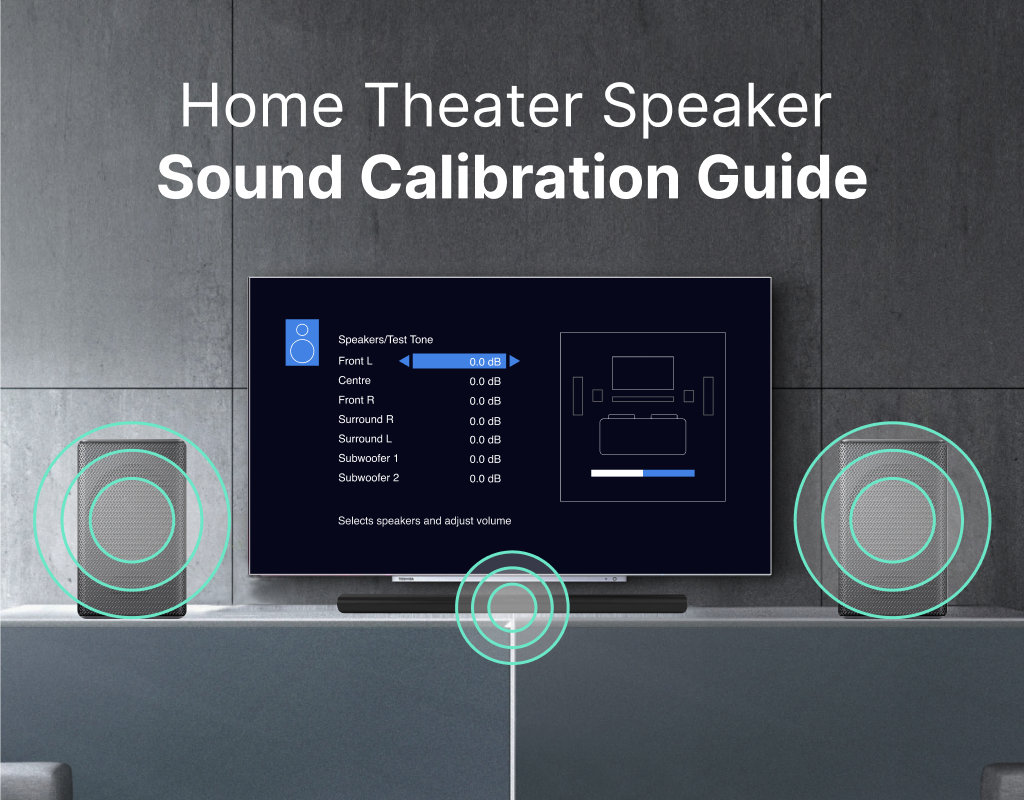When it comes to creating an immersive and captivating home entertainment experience, audio quality plays a pivotal role. You might have invested in a high-definition television and the latest gaming consoles, but if your audio setup is lacking, you’re missing out on a significant part of the experience. That’s where audio calibration and sound settings come into play.
In this comprehensive guide, we will explore the ins and outs of audio calibration and sound settings, helping you unlock the full potential of your home theater or audio system. We’ll cover topics such as speaker placement, room acoustics, and the importance of selecting the right audio settings. Whether you’re a movie enthusiast, a gaming aficionado, or a music lover, this guide will help you achieve audio nirvana in your own home.
Chapter 1: The Importance of Audio Calibration
Before we dive into the technical details, let’s first understand why audio calibration is crucial. Think of audio calibration as fine-tuning a musical instrument. Just as a piano needs to be in tune to produce beautiful melodies, your audio system needs calibration to deliver exceptional sound quality. Here’s why it matters:
1.1 Immersion and Realism
Picture yourself watching a thrilling action movie or playing an intense video game. The sound of explosions, footsteps, and dialogues should surround you, creating a sense of immersion. Proper audio calibration ensures that sound is accurately distributed, making you feel like you’re right in the middle of the action.
1.2 Clarity and Detail
In the world of audio, clarity is king. Calibrating your audio system allows you to hear even the subtlest of details in a soundtrack, whether it’s the rustling of leaves in a quiet forest or the whispers of a character on screen. This level of detail enhances your overall viewing or gaming experience.
1.3 Reducing Audio Distortion
Audio distortion can be a mood killer. It disrupts the flow of a movie or the intensity of a game. Proper calibration minimizes distortion, ensuring that your audio remains crystal clear, even at high volumes.
Chapter 2: The Basics of Audio Calibration
Now that we’ve established the importance of audio calibration, let’s move on to the basics. Audio calibration involves a series of steps to configure your audio system for optimal performance. Here’s a breakdown of what you need to do:
2.1 Speaker Placement
The placement of your speakers is crucial. The ideal setup will vary depending on the size and shape of your room, as well as the type of speakers you have. We’ll discuss the differences between 2.1, 5.1, and 7.1 audio systems and provide tips on speaker placement for each.
2.2 Room Acoustics
Your room’s acoustics play a significant role in how sound travels and is perceived. We’ll explore how factors like wall materials, furniture, and room dimensions can impact sound quality and what you can do to optimize your space.
2.3 Calibration Tools
There are various tools and equipment available for audio calibration, from built-in software in AV receivers to dedicated calibration microphones. We’ll guide you through the selection and use of these tools to fine-tune your audio system.
Chapter 3: Sound Settings and Equalization
In addition to physical setup, adjusting your audio system’s settings and equalization is essential for achieving the best sound quality. Here’s what you need to know about sound settings:
3.1 Equalization
Equalization (EQ) is the process of adjusting the balance of audio frequencies. We’ll explain the basics of EQ and how to customize it to your preferences. Whether you like booming bass or crisp highs, EQ can help you achieve the perfect audio profile.
3.2 Surround Sound
Surround sound is a must for a captivating home theater experience. We’ll discuss the various surround sound formats, such as Dolby Atmos and DTS:X, and how to configure them for your audio system.
3.3 Audio Sources
The source of your audio, whether it’s a Blu-ray player, gaming console, or streaming device, can affect sound quality. We’ll provide tips on optimizing audio settings for different sources and devices.
Chapter 4: Regular Maintenance and Upkeep
Once you’ve calibrated your audio system and optimized your sound settings, your job isn’t over. Regular maintenance and upkeep are essential to ensure that your audio quality remains top-notch. We’ll cover topics like cleaning your speakers, checking for cable issues, and software updates for your AV receiver.
Chapter 5: Enjoy the Experience
With your audio system calibrated to perfection and sound settings tailored to your preferences, it’s time to sit back, relax, and enjoy the immersive world of home entertainment. Whether you’re watching a blockbuster movie, gaming with friends, or listening to your favorite music, your audio experience will be nothing short of phenomenal.
Conclusion
Audio calibration and sound settings are the unsung heroes of your home entertainment setup. They can transform an ordinary experience into an extraordinary one. By following the steps and tips outlined in this guide, you’ll be well on your way to enjoying the best audio quality your system can deliver. Don’t miss out on the full potential of your home theater or audio setup – optimize it today and embark on an audio journey like no other.



